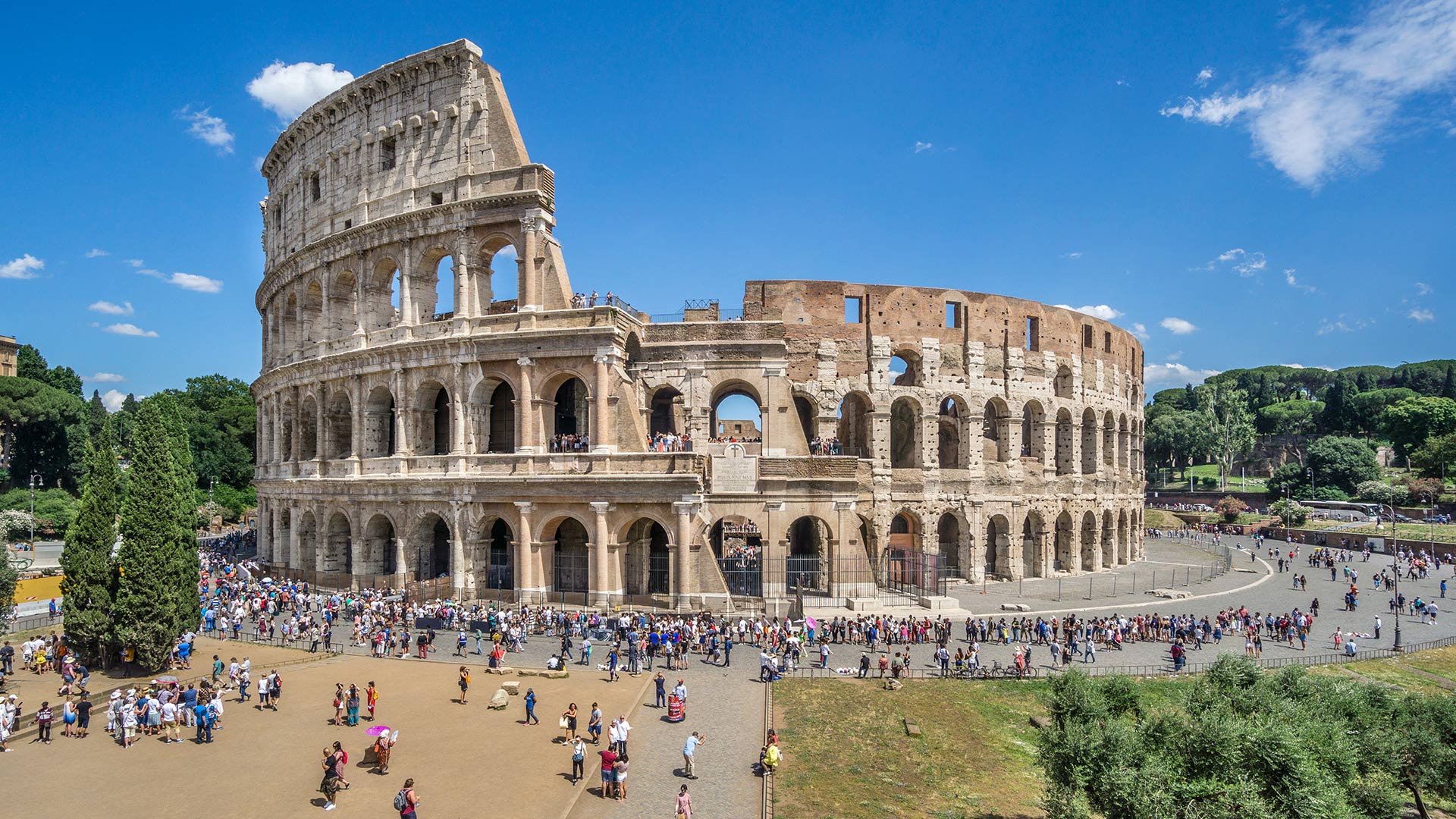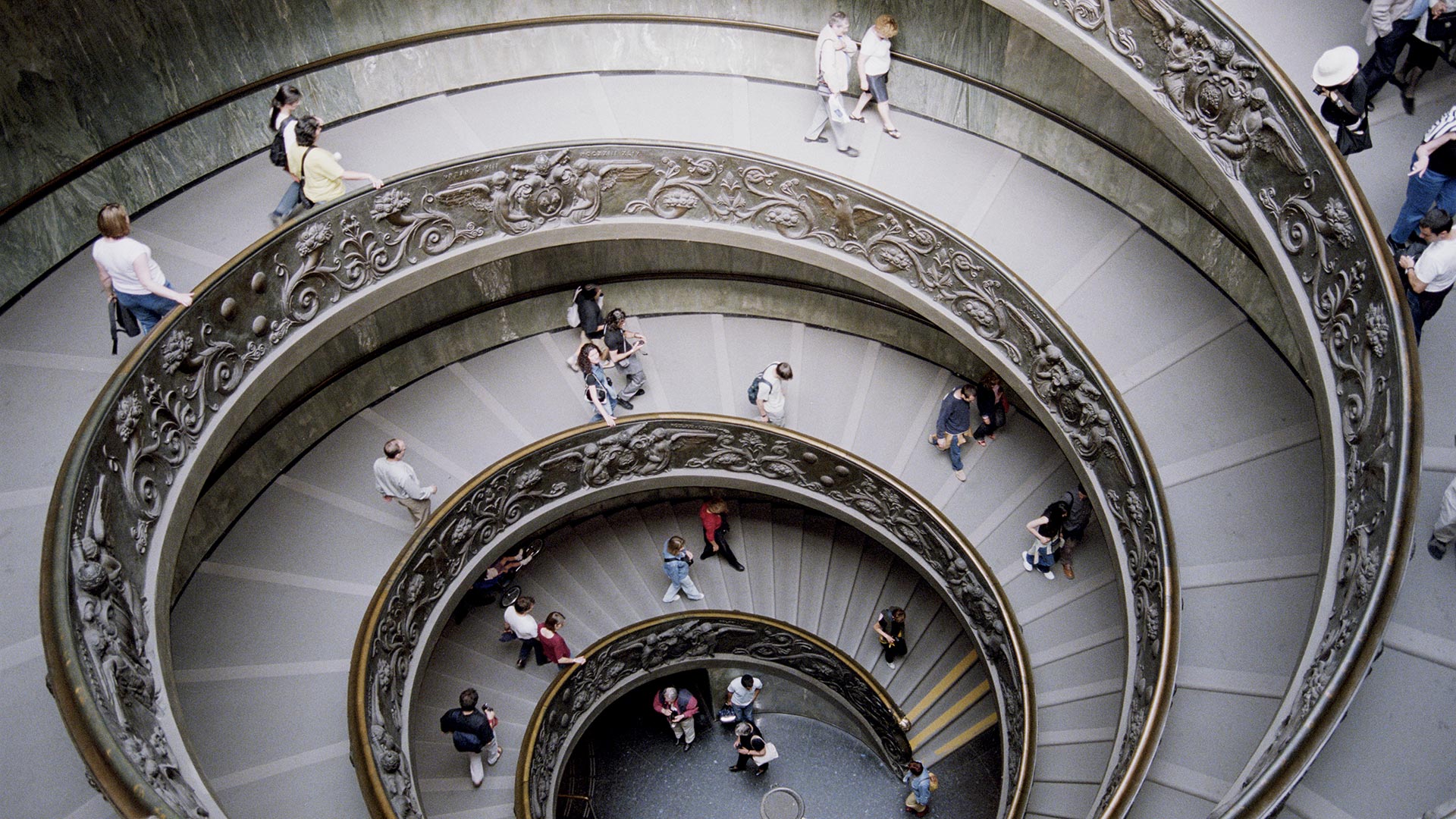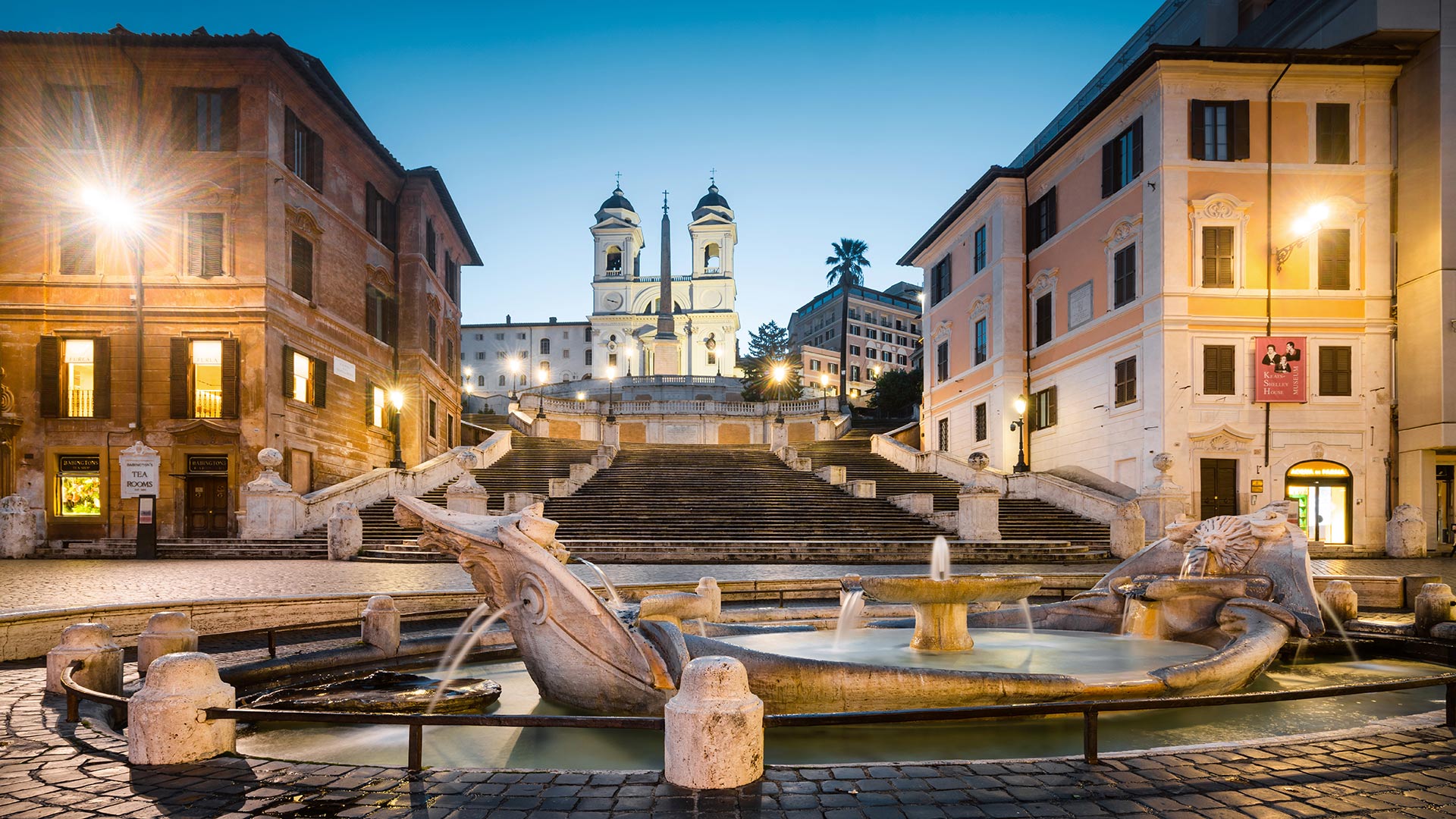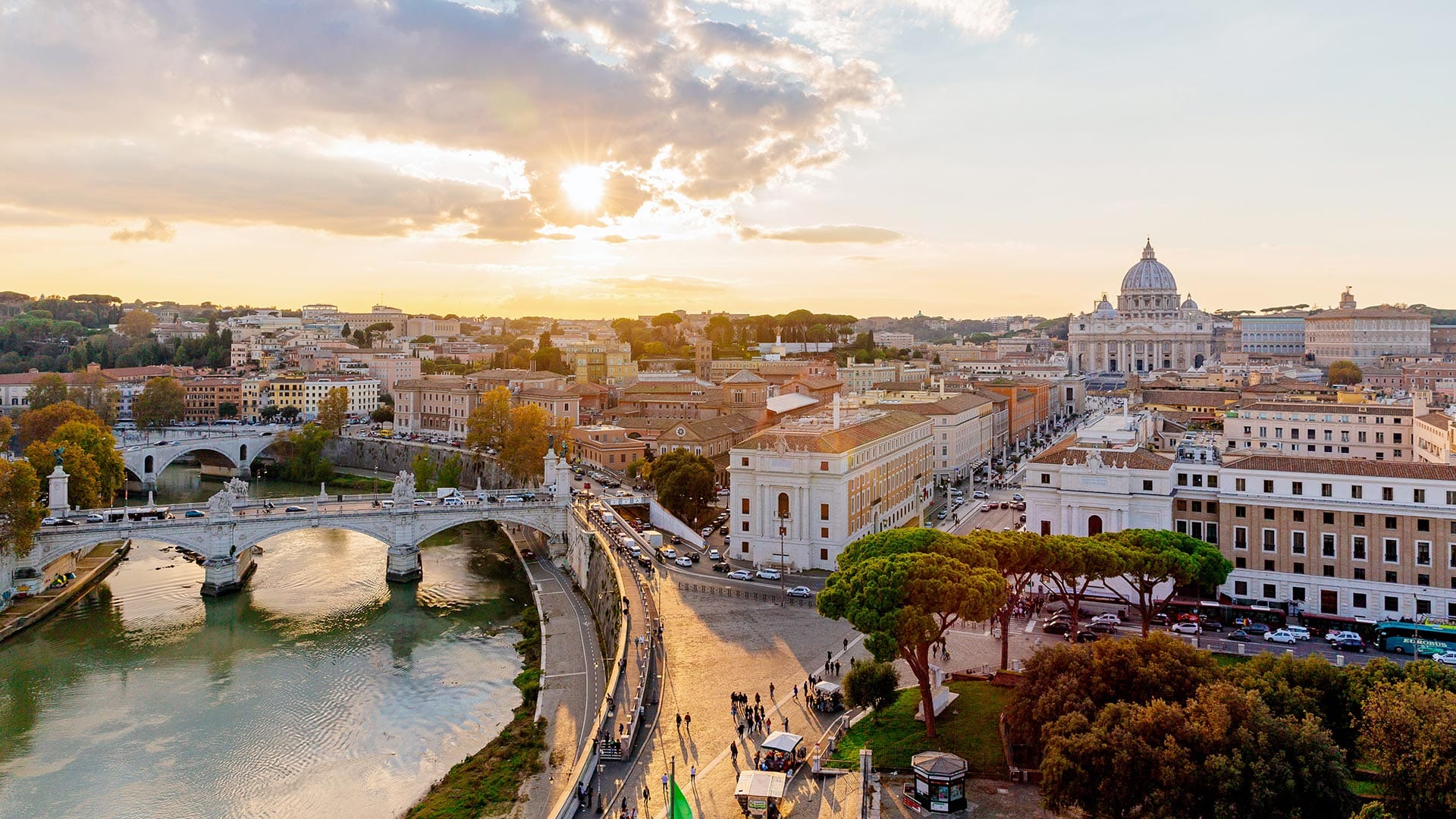Rome wasn’t built in a day — and you can’t expect to see it all in a day either. It would take a lifetime to visit all the city’s ancient ruins, timeworn piazzas and historic churches (there are more than 900 of them!), but you can get a pretty good overview of the city in a single long weekend.
If you have a limited amount of time, focus on must-visit sites like the Colosseum, the Pantheon and the Vatican Museums, but be sure to leave some time to wander the charming cobblestone streets of eclectic, boho-meets-Baroque neighborhoods such as Monti and Trastevere.
As always, check for travel restrictions and closures before planning your trip.
Friday: Explore Rome’s Ancient Past

To kick off your weekend adventure, opt for breakfast at your hotel — you’ll want to start the day early to catch your first sight as crowd-free as possible. Rome spans more than 2,500 years of history, so it’s fitting to start at the birthplace of the Roman Empire. A single ticket grants you access to the Colosseum, the Roman Forum and the Palatine Hill — book it in advance and plan to get there as soon as the sites open. While the ancient ruins are impressive to see, there’s not much signage explaining what the various temples and other structures in the Forum were used for, so you might want to hire a guide to bring the stories of ancient Rome to life. Imago Artis has some of the best guides in town.
After you’ve worked up an appetite, walk uphill to Monti, one of Rome’s buzziest neighborhoods thanks to a spate of funky, stylish shops and businesses, and grab a table at Rocco Ristorante. The rotating daily menu is written on a chalkboard and might feature Roman classics like carbonara or amatriciana, as well as other trattoria fare such as eggplant parmigiana.
Once you’re settled up, spend the afternoon wandering Monti’s charming cobblestone streets, which are full of independent boutiques run by local artisans and makers. At Kokoro, you might see the seamstress in action, as all of the clothing is designed by the owners. Art Privé Gioielli is the place for jewelry made with precious and semiprecious stones. And Grezzo Raw Chocolate sells edible souvenirs you can bring home — all vegan, gluten-free, lactose-free and organic — if you can resist the temptation to eat them right away.
In the evening, slow down and savor an aperitivo like the locals do. For excellent people-watching, grab a front-row seat at one of the little cafés on Piazza della Madonna dei Monti, such as La Bottega del Caffè, where salty snacks come with the spritzes. Or head to the quieter side of Monti for creative cocktails at Drink Kong, which was inspired by 1980s Japan and has claimed a spot on the World’s 50 Best Bars list, thanks to its trailblazing proprietor Patrick Pistolesi. If the aperitivo snacks don’t cut it for dinner, consider a hearty pasta at Ai Tre Scalini, where the interiors are cozy and the wine list is 100 percent Italian.
Saturday: See the Vatican’s Artistic Treasures

Be sure to fuel up with a cappuccino this morning, because you’re setting out to tackle one of the world’s largest and most visited collections. Established in the 16th century, the Vatican Museums are housed in the Vatican Palace, a massive labyrinthine complex comprising an estimated 1,400 rooms, chapels and galleries.
You could easily spend an entire day there and just scratch the surface; plan your visit carefully or you’ll be overwhelmed by the crowds and the sheer amount of art to see. The top bucket-list stop is the Sistine Chapel, painted by Michelangelo in the 15th century, but there are plenty of other highlights, including the Raphael Rooms with their gorgeous frescoes; the Laocoön and His Sons, one of the most famous Roman sculptures since it was first excavated in 1509; the Belvedere torso, which historians say inspired Michaelangelo himself; and the Hall of Maps.
For a quick lunch, head over to Bonci Pizzarium, widely regarded as the city’s best spot for pizza al taglio (by the slice). Created by master pizzaiolo Gabriele Bonci, the pizzas feature dozens of different toppings, including prosciutto, artichokes, mozzarella, anchovies, mortadella and lots more. Line up at the counter and choose as many flavors as you like — the pizza is priced by weight.
Next, stroll along the Tiber, stopping to admire Castel Sant’Angelo and the Ponte Sant’Angelo, lined with statues of angels designed by 17th-century sculptor Gian Lorenzo Bernini. Keep walking south until you reach Trastevere, one of Rome’s most picturesque neighborhoods, known for its quaint cobblestone streets and popular trattorias and bars.
Trastevere comes alive in the evenings, when locals and visitors flock to atmospheric, quintessentially Romanesque squares like Piazza Santa Maria in Trastevere and Piazza Trilussa. The neighborhood is home to some of Rome’s best trattorias. For some of the best cacio e pepe and carbonara in the city, head over to Da Enzo al 29. This family-run trattoria doesn’t take reservations, so plan to get there by 6:30 p.m. if you want to snag one of the first tables when they open at 7 p.m.
Sunday: Immerse Yourself in Baroque Rome in the Centro Storico

You’ve explored ancient ruins and visited the Vatican Museums, so now it’s time to see why Rome itself is often called an open-air museum. There’s no better place to do this than the Centro Storico, the most ancient corner of the city, and the area around the Spanish Steps, the dramatic 18th-century stairway below Trinità dei Monti that has been featured in art, literature and film since its creation.
Start the day at Roscioli Caffè, where you can try a maritozzo, the quintessential Roman pastry. A soft bun split down the middle and filled with cream, it’s perfect with a cappuccino for breakfast. Afterward, walk toward Campo de’ Fiori to see the open-air market, operating only in the mornings. Stroll along Via Giulia, the picturesque street created by Pope Julius II (the same pope who commissioned the Sistine Chapel) to link the Centro Storico to the Vatican.
From there, head over to Piazza Navona, the bustling oval piazza where you can admire Bernini’s Fountain of the Four Rivers. The streets surrounding it are lined with shops, restaurants and churches such as Santa Maria della Pace, which houses yet more frescoes by Raphael. Then make your way over to the Pantheon to see the great Renaissance master’s tomb. Now a Catholic church, it’s actually Rome’s best-preserved ancient temple, and its iconic dome and oculus have inspired architecture the world over.
For a leisurely lunch, book a table in advance at Pierluigi, a seafood lover’s paradise located on the charming Piazza de’ Ricci. Go all-in with a seasonal seafood platter loaded up with prawns and oysters (meant for sharing) or tagliolini with lobster. Finish lunch with an espresso, as the Romans do — you’ve got a lot more walking ahead of you.
If you want to do some shopping, now is your chance. Via di Monserrato is lined with upscale boutiques such as Maison Halaby, where designer Gilbert Halaby sells handcrafted leather bags in vibrant hues, and the cult concept shop Chez Dede, where husband-and-wife team Andrea Ferolla and Daria Reina sell a curated selection of bags and T-shirts of their own design (Ferolla is a noted illustrator) as well as vintage jewelry, art tomes and more.
Afterward, walk east toward the Trevi Fountain, perhaps stopping to toss in a coin and, legend has it, ensuring you’ll return to Rome, and then continue up to the Spanish Steps, where visitors flock to see the scene that’s been immortalized by F. Scott Fitzgerald and Roman Holiday alike. The surrounding streets are lined with stores by all the big-name designers, from Armani to Valentino.
Ready for dinner? Make your way to W Rome, where you can enjoy cocktails and Sicilian dishes by celebrated chef Ciccio Sultano at Giano, or head up to the Otto Rooftop Bar for cocktails and pizza by Rome’s rising-star pizzaiolo, Pier Daniele Seu.




